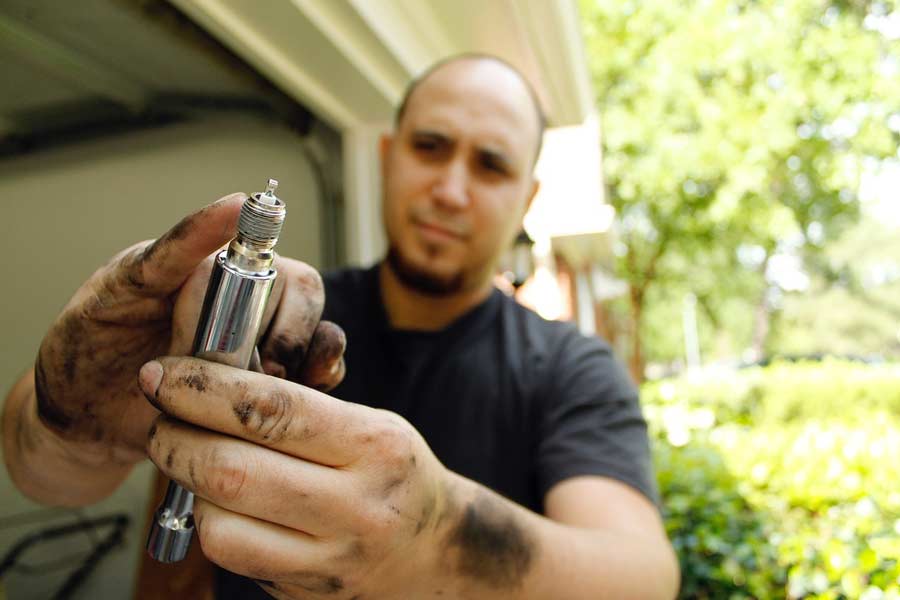
Motor vehicles are a convenient, luxurious way of getting from place to place. Vehicles carry out this function by way of an engine. The engine converts heat energy into mechanical work, which pushes the wheels into motion. But how precisely does this happen, and what parts do this job? Engines are comprised of pistons that move up and down inside fixed tubes called cylinders. The pistons are responsible for rotating the crankshaft, which ultimately moves the wheels. This movement would not be possible without the spark of electricity that burns the fuel and forces the pistons into action. This spark comes from a component of the cylinders called spark plugs.
What Are Spark Plugs?
Spark plugs are one of the most indispensable components of a spark-ignited internal combustion engine. Typically made of copper, iridium, or platinum, they are small, insulated, metallic devices fitted into the upper most part of the combustion area of the engine. The plugs have three main parts:
- The electrodes that generate the electrical current
- The housing that surrounds and supports the insulator and screws into the cylinder
- The insulator that protects the electrodes from the housing to prevent loss of high voltage
How Do They Work?
When you turn the key to start up your vehicle, it initiates a chain reaction that causes the pistons to drop. This allows a mixture of air and gasoline to enter the cylinders. When the pistons move upwards again, it compresses the mixture. At this point, the spark plugs generate the electrical current needed to ignite the combination of air and gasoline, causing it to combust or burn. As it burns, it expands and pushes the pistons into constant motion that allows your vehicle to start up, stay powered and efficiently burn the fuel.
The spark plugs also pull unwanted heat away from the combustion chamber by transferring it to the engine’s cooling system for optimal performance.
When Should You Change Your Spark Plugs?
Experts generally recommend installing new spark plugs every 20,000 t0 50,000 miles depending on the type and age of the vehicle, the quality of the spark plugs, and the manufacturer. However, spark plugs are typically durable, provided engine conditions are optimal and can endure even longer mileages in newer vehicles.
Consequently, the spark plugs are good indicators of the condition of your engine. You may need to get your spark plugs changed if they become worn or eroded, or fouled by unburned gasoline, which can result in the following issues:
Increased Fuel Consumption
A properly functioning set of spark plugs will allow your engine to burn fuel efficiently during the combustion sequence. This decreases the frequency with which you need to refuel, as the vehicle requires less fuel to operate. However, worn spark plugs are less efficient at emitting electrical current to burn fuel due to larger gaps between the electrodes, causing an increased demand to refuel.
Misfiring Engine
A faulty spark plug could be the reason your engine emits a sputtering sound or stumbles instead of running smoothly. This results from the accumulation of deposits from the combustion sequence, which results in the electrical current grounding against the deposits rather than sparking across the electrode gap to light the gasoline and air mixture.
Lack of/Slow Acceleration
Worn spark plugs can also result in your vehicle moving sluggishly or not accelerating as quickly as it usually does. However, since multiple factors cause can this, it is advisable to seek a mechanic’s expertise to diagnose the issue.
Pre-ignition
Pre-ignition occurs when overheating causes the air-gasoline mixture to be ignited before the electrical current initiates combustion. This heightens the cylinder’s pressure and temperature and can severely damage the spark plugs or engine.
Conclusion
Your vehicle cannot function efficiently without healthy spark plugs. Though they may be small, they’re an integral part of the core of what keeps your vehicle running. Changing them when necessary will preserve the integrity of the engine and keep your vehicle running.






